What is a cytoplasm? Structure, composition and properties of cytoplasm
What is a cytoplasm? What is its structure and composition? What functions does it do? In this article we will carefully answer all these questions. In addition, we will see the structural features of the cytoplasm and its characteristics, we will also talk about dividing a colloidal solution, the structure of cell membranes and important cellular organoids.
Structural units of all tissues and organs of the cell. Two types of their structural organization
It is clear that cells form tissues of all plants and animals. These structural units of all lives can differ in shape, size and even in the inner structure. But at the same time, they have identical principles in the processes of vital activity, including in the exchange of substances, growth and development, irritability and variability. The simplest forms of life consist of a single cell and breeded with division.
Scientists were allocated two types of cellular structure organization:
- prokaryotic;
- eukaryotic.
They have a huge number of differences in their own structure. In the prokaryotic cell, there is no structurally decorated kernel. Its the only chromosome is specifically in the cytoplasm, in other words, it is not separated from other parts. This structure is characterized by microbes. Their cytoplasm is poor in the composition of the structures, but it has small ribosomes. Eukaryotic arranged even more difficult to prokaryotic cell. Its DNA associated with protein is located in chromosomes located in a separate cellular organide - core. It is separated from other organoid cells of the porous membrane and consists of parts such as: chromatin, nuclear juice and nucleolo. Nevertheless, there is something in common in the 2 types of cellular organization. And prokaryotes, and eukaryotes have a shell. And their internal content is represented by a special colloidal substance, in which there are different organides and temporary inclusions.
Eukaryotic cell: cytoplasm. Its composition and functions
So, we run into the essence of our research. What is a cytoplasm? Let's see more carefully this cell education. The cytoplasm is an archiving component of cells located between the core and the plasma membrane. Semi-winged, it is penetrated by tubules, microtubes, microfilaments and filaments. Also under the cytoplasm can be aware of colloidal solution, which is characterized by the movement of colloidal particles and other components. In this semi-liquid medium consisting of water, different organic and inorganic compounds, cellular structure-organides are placed, also temporary inclusions. Important functions of the cytoplasm are such. It produces all cell component into a single system. Due to the presence of tubules and microtubes of the cytoplasm makes the function of the cell skeleton and provides medium to implement physiological and biochemical processes. Not counting this, it makes it possible for the functioning of all cellular organoids and provides movement. These cytoplasm cell functions are very important, because they allow the structural unit of all the lives to produce its normal life. Now you understand what is a cytoplasm. Also familiarized with what position in the cell it takes and what "work" does. Then we will see the composition and structure of the colloidal solution more carefully.
Is there any differences in the cytoplasm of plant and animal cells?
Membrane organoids located in a colloidal solution, the Golgi apparatus, an endoplasmic network, mitochondria, lysosomes, plasts and an outer cytoplasmic membrane are listed. In the cells of animals and plants, the composition of the semi-liquid medium is different. The cytoplasm in the plant cell has special organoids - plasts. They are specific protein calves that differ in functions, shape and painted with pigments in various colors. The plasts are placed in the cytoplasm and are able to move together with it. They grow fruit and produce organic compounds containing enzymes. The cytoplasm in the plant cell has three types of plastid. Yellow or orange are referred to as chromoplasts, greenish - chloroplasts, and dull to leukoplasts. There is another corresponding feature - the Golgji complex is represented by dotiosomes differing in cytoplasm. In animal cells, in contrast to vegetable, there are two layers of cytoplasm. The external is referred to as the ectoplasm, and the internal - endoplasm. The 1st layer is adjacent to the cell membrane, and the 2nd - is between it and the porous nuclear membrane. Extoplasma has a huge number of microfulators from the molecules of the globular protein of actin in its own composition. The endoplasm contains different organides, the granulos and is characterized by the smallest viscosity.

Hyaloplasm in eukaryotic cell
The database of the cytoplasm of eukaryotes is so referred to as the hyaloplasma. It is a mucous, dim, inhomogeneous solution, in which considerations are constantly processed. Hyaloplasma (in other words, matrix) is a colloid system with a complex structure. It contains soluble RNA and proteins, lipids and polysaccharides. The hyaloplasm also contains a significant number of nucleotides, amino acids, also ions of non-organic compounds of type Na - or Ca 2+. 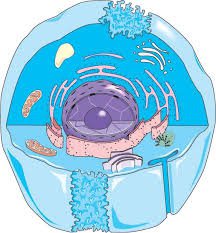 Matrix does not have a homogeneous structure. It is presented in 2 forms that are referred to as the gel (hard) and sol (water). Interconnects are happening between them. In the water phase there is a system of finest protein threads, which are referred to as microtraces. They bind all the structures of the cells of the cell. And in the places of their crosses are groups Ribosomes. Microtraces together with microtubes and microfilaments form a cytoplasmic skeleton. It defines and streamlines the position of all cellullell.
Matrix does not have a homogeneous structure. It is presented in 2 forms that are referred to as the gel (hard) and sol (water). Interconnects are happening between them. In the water phase there is a system of finest protein threads, which are referred to as microtraces. They bind all the structures of the cells of the cell. And in the places of their crosses are groups Ribosomes. Microtraces together with microtubes and microfilaments form a cytoplasmic skeleton. It defines and streamlines the position of all cellullell.
Organic and inorganic substances in a colloidal solution of cells
Let's see, what is the composition of the cytoplasm? The substances in the cell can be systematized into two groups - organic and inorganic. 1st is represented by proteins, carbohydrates, fats and nucleic acids. Carbohydrates in the cytoplasm are represented by mono-, di- and polysaccharides. To monosaccharides, dull crystalline substances, usually sweetly taste, belongs to fructose, glucose, ribose, etc. Large polysaccharide molecules consist of monosaccharides. In the cell they are represented by starch, glycogen and cellulose. Lipids, in other words, the fats molecules are formed by the remnants of glycerol and fatty acids. The structure of the cytoplasm: inorganic substances are first represented by water, which is usually up to 90% of the mass. It does in the cytoplasm principal functions. 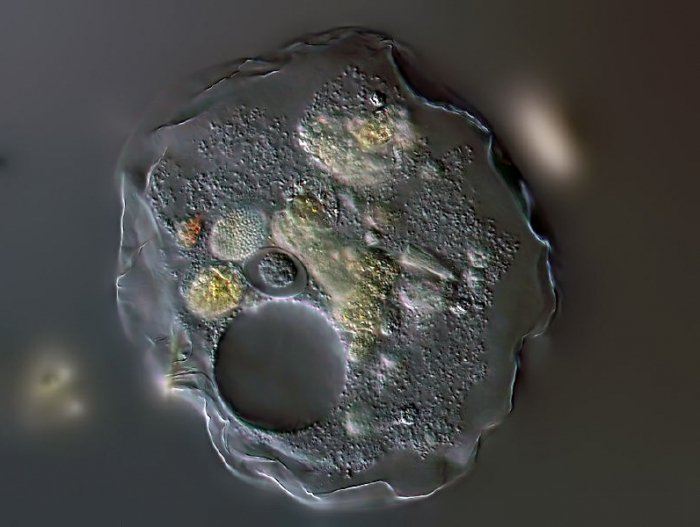 Water is a universal solvent, assigns elasticity, perceives a specific role in moving substances both sump and between cells. As for the macroelements that form the biopolymer base, then more than 98% of the entire cytoplasm composition occupy oxygen, hydrogen, carbon and nitrogen. Apart from them in the cell contain sodium, calcium, sulfur, magnesium, chlorine, et al. Mineral salts are in the form of anions and cations, with all this, their ratio determines the acidity of the medium.
Water is a universal solvent, assigns elasticity, perceives a specific role in moving substances both sump and between cells. As for the macroelements that form the biopolymer base, then more than 98% of the entire cytoplasm composition occupy oxygen, hydrogen, carbon and nitrogen. Apart from them in the cell contain sodium, calcium, sulfur, magnesium, chlorine, et al. Mineral salts are in the form of anions and cations, with all this, their ratio determines the acidity of the medium.
Characteristics of colloidal solution in a cell
Let us see what the main characteristics of the cytoplasm are. In-1, it is constant cyclic. It is an intracellular cytoplasm movement. For the first time it was recorded and described in the 18th century by Italian Court scientists. Cyclicosis is carried out throughout the protoplasm, including in the hoods connecting the cytoplasm with the core. If the movement for any reasons ceases - the eukaryotic cell dies. The cytoplasm is certainly located in the unchanged cyclicosis, which is located on the movement of organoids. Matrix motion speed is depending on different reasons, including light and temperature. For example, in the epidermis of scales, the speed of cyclose is about 6 m / s. The cytoplasm movement in the vegetation body has a great effect on its growth and development, facilitating the transport of substances between cells. The second principal property is the viscosity of the colloidal solution. It is very varied depending on the type of body. In some living creatures, the viscosity of the cytoplasm can be completely uncorrected exceeding the viscosity of water, in others, on the contrary, to achieve the viscosity of glycerol. It is believed that it is depending on the metabolism. The better the exchange occurs, the lower the viscosity of the colloidal solution becomes. 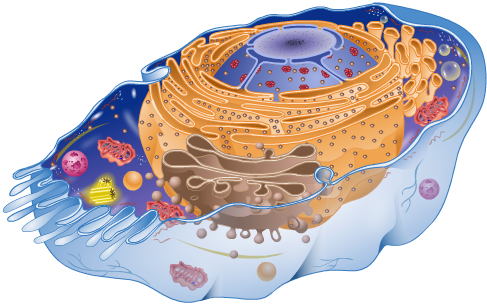 Another important property is half perceivability. The cytoplasm in its own composition has border membranes. These, thanks to a special own structure, have the ability to selectively pass the molecules of alone and not to skip others. The electoral permeability of the cytoplasm plays the most important role in the process of life. It is not constant for life, changes over the years and increases in vegetable organisms when increasing the intensity of lighting and temperature. It is difficult to overestimate the value of the cytoplasm. It participates in the energy metabolism, the transport of nutrients, exotoxin removal. The Matrix is \u200b\u200balso considered an osmotic barrier and participates in the regulation of development processes, growth and cellular division. Including cytoplasm plays a huge role when DNA replication.
Another important property is half perceivability. The cytoplasm in its own composition has border membranes. These, thanks to a special own structure, have the ability to selectively pass the molecules of alone and not to skip others. The electoral permeability of the cytoplasm plays the most important role in the process of life. It is not constant for life, changes over the years and increases in vegetable organisms when increasing the intensity of lighting and temperature. It is difficult to overestimate the value of the cytoplasm. It participates in the energy metabolism, the transport of nutrients, exotoxin removal. The Matrix is \u200b\u200balso considered an osmotic barrier and participates in the regulation of development processes, growth and cellular division. Including cytoplasm plays a huge role when DNA replication.
Features of cellular reproduction
All vegetable and animal cells are fruitful. It is clear three types - indirect, direct and reduction. The 1st different is called the amitosis. Indirect reproduction occurs followed. Initially, the core is "rejected", and then cytoplasm is divided. Ultimately, two cells are formed, which evenly grow to the size of the maternal. This type of division in animals is very occasionally. Usually, their indirect division occurs, in other words, mitosis. It is significantly more difficult to amitosis and is characterized by the fact that the synthesis is increased in the kernel and doubling the number of DNA. Mitosis has four phases, which are referred to as profasis, metaphase, anafase and bodia.
- The 1st phase is characterized by the formation of a tangle of chromatin yarns on the site of the core, and then chromosoma in the form of "studs". During this period, the centrium is discrepressed to the poles and the formation of ahromatine spindle separation.
- The 2nd pitch of mitosis is characterized in that the chromosomes, reaching the greatest spiralization, begin to be placed on the equator of the cells ordered.
- In the third phase, the splitting of chromosome on two chromatids occurs. With all this, the threads of the spindle are reduced and delayed child chromosomes to the reverse poles.
- In the fourth phase of mitosis, the chromosomes are dispiration, also forming around their nuclear shell. The cytoplasma division immediately occurs. Daughter cells have a diploid set of chromosomes.
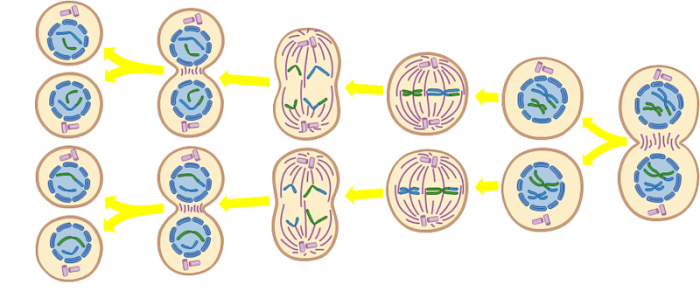
Reducing division is characteristic only by sex cells. With such a type of cellular reproduction, the formation of pairwise chromosomes. The exception is one unpaired chromosome. As a result, half chromosomal set of reduction division in 2 daughter cells. The unpaired is only in one subsidiary. Sex cells having a half chromosome set, ripen and capable of fertilization, are referred to as feminine and male gates.
The concept of cytoplasmic membrane
All animal cells, plants and even simple microbes have a special surface vehicle that limits and protects the matrix from the outer environment. The cytoplasmic membrane (plasma, cell membrane, plasma membrane) is a selectively permeable layer of molecules (proteins, phospholipids), which worst cytoplasm. It includes three subsystems:
- plasma membrane;
- complex complex;
- sEMMMBRAN MODE-CHAIN \u200b\u200bSUPPORT OF GALOSMAMS.
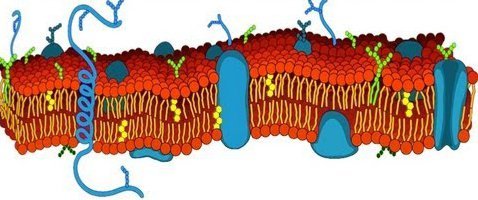
The building of the cytoplasm membrane is: it contains two layers of lipid molecules (broken), with all this any such molecule has a tail and head. Tails are addressed to each other. They are hydrophobic. Heads are hydrophilic and drawn inward and outward cells. Bilayer included protein molecules. At the same time, it is asymmetrical, and in monolayers there are various lipids. For example, in the eukaryotic cell, cholesterol molecules are located in the inner adjacent to the cytoplasm, half of the membrane. Glycolipids are placed only in the outer layer, while their carbohydrate chains are always oriented outward. The cytoplasmic membrane makes important functions, including limits the internal contents of the cell from the outer environment, allows you to leak out to certain substances (glucose, amino acids) inward cells. Plasmalemma produces the transfer of substances into the cells, also the output to the outside, in other words, the selection. Water, ions and small molecules of substances fall through the pores, and large solid particles are transported to the cell using phagocytosis. On the surface of the membrane, microvils, prying and protrusion, which allows not only to be absorbed and distinguished, and allocate substances, and connect to other cells. The membrane provides the possibility of attaching the "units of all living" to different surfaces and promotes movement.
Organoishes in the composition of the cytoplasm. Endoplasmic network and ribosomes
In addition to hyaloplasm, the cytoplasm contains inside itself and a huge number of microscopic organoids that differ in structure. Their presence in plant and animal cells indicates that they all make important functions and are relevant. In some extent, these morphological formations are comparable to the organs of the human body or animals, which has given the opportunity to call them organides. In the cytoplasm, the organelles -plastic complex, mitochondria and centrosome are visible in the light microscope. With the help of an electrical microscope in the matrix, microtubule, lysosomes, ribosomes and plasma network are found. Cellular cytoplasm is permeated with different channels, which received the title "Endpolasmatic network". Their membrane walls are in contact with all other organelles and make up a single system that carries out energy exchange, also moving the cells of the cells of substances. The walls of these channels are ribosomes that look like small granules. They can be posted by single or groups. Ribosomes consist of actually equal amounts of ribonucleic acid and proteins. Also, their composition includes magnesium. Ribosomes can not only be in the EPS channels, and freely lie in the cytoplasm, also to meet in the kernel, where they are formed. Sovopapa channels having ribosomes are referred to as the granular endoplasmic network. According to them, not counting the ribosomes, enzymes that promote the synthesis of carbohydrates and fats are placed. In the internal cavities of the channels there are products of the vital activity of the cell. From time to time, vacuoles filled with cellular juice and limited membrane are formed in the EPS expansion. These organoids support the tour pressure. Lizosomes are small formation of a rounded form. They are scattered by cytoplasm. Lizosomes are formed in EPS or the Golgi complex, where they are filled with hydrolytic enzymes. Lizosomes are designed to digest particles that have incurred cells due to phagocytosis.
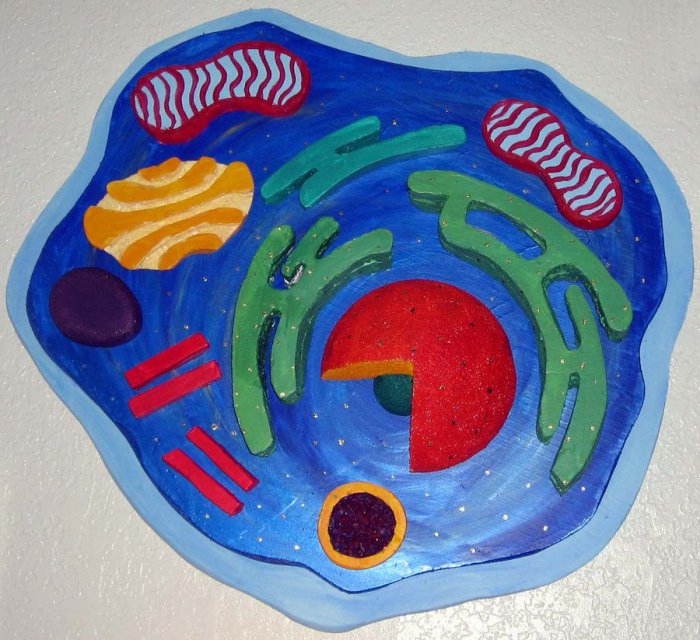
Cytoplasm: the structure and functions of its organoids. Golgi, Mitochondria and Centrosoma Plate Complex
The Golgi complex is presented in plant cells with separate vents decorated with membranes, and in animals - by tubules, bubbles and tanks. This organoid is intended for chemical configuration, seals and the next conclusion in the cytoplasm of cellular secretion goods. It also implements the synthesis of polysaccharides and the formation of glycoproteins. Mitochondria is a shoulder chopped, filamental or grainy shape. They are limited to 2 membranes, which consist of double layers of phospholipids and proteins. Crystos depart from the internal membranes of these organelles, on the walls of which are enzymes. Using them, the synthesis of adenosyntrifosphoric acid (ATP) occurs. Mitochondria is called "cellular electric stations" from time to time, because they supply a significant part of the adenosine trifhosphate. It is used by a cell as a source of chemical energy. In addition, mitochondria do other functions, including: transmission of signals, cell necrosis, cell differentiation. Centrosoma (cellular center) consists of 2 centroles, which are placed at an angle to each other. This organoid is available in all animals and plants (not counting simple and lower mushrooms) and is responsible for determining poles during mitosis. In the changing cell, at first the centrosoma is divided. With all this, Achromatine spindle appears, which sets the landmarks of chromosomes, divergent to the poles. Apart from the designated organoids in the cell can also be organles of special purpose, for example, eyelashes and flagellas. Also at certain steps of life, it can also have inclusions, in other words, temporary elements. For example, such nutrients like: biam droplets, proteins, starch, glycogen, etc.
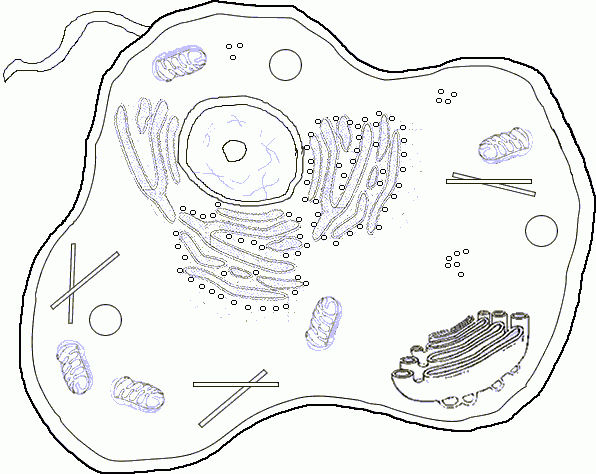
Lymphocytes - Immune system important cells
Lymphocytes are fundamental cells related to a group of human blood leukocytes and animals and participating in immunological reactions. They are divided into size and structural features for three subgroups:
- small - diameter of the least 8 microns;
- medium - diameter from 8 to 11 microns;
- huge - diameter above 11 microns.
Small lymphocytes prevail in the blood of animals. They have a large core of a rounded form, which prevail over the volume of cytoplasm. The cytoplasm of lymphocytes of this subgroup looks like a nuclear bezel or a sickle, adjacent to some side of the nucleus. Often in the matrix contains a certain amount of azurofyl granules of small size. Mitochondria, elements of the plate complex and the EPS tubules are small and are near the nuclear deepening. Middle and huge lymphocytes are arranged a little differently. Their kernels have a bean shape, contain the smallest amount of chromatin condensed. They simply distinguish the nucleolus. The cytoplasm of lymphocytes of the 2nd and third groups has a wider range. It is clear two classes of lymphocytes, so called in and t-lymphocytes. The 1st is formed in animals in the milled-shaped bone marrow fabric. These cells have the ability to create immunoglobulins. With the help of their in-lymphocytes, interaction with antigens, recognizing the latter. T-lymphocytes are formed from bone marginal cells in thymus (in its cortical part of the poles). In their cytoplasmic membrane there are surface antigens of histocompatibility, also countless sensors with which the determination of alien particles is determined. Small lymphocytes, mainly represented by T-lymphocytes (more than 70%), in the middle of which there is a huge number of long-lived cells. The overwhelming majority of B-lymphocytes live long - from one week to a month.
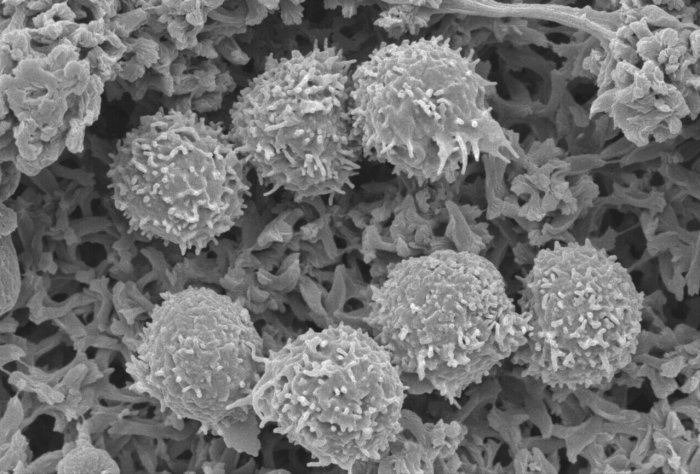
We have hopes, our article has proven to be useful, and now you understand what is cytoplasm, hyaloplasma and plasmaemma. Also familiarized, what are the functions, structure and importance for the organism of these cell formations.
